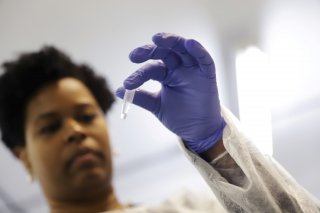'Junk' Genetic Material Has Huge Potential to Fight Cancer and Dementia
When scientists first worked out the human genome, they originally estimated that as much as 24% of it was useless junk. Now, researchers are finding ways to use this 'junk' material to diagnose, monitor and even treat diseases.
Only 1.1% of the nearly 3 billion molecules that make up our genome actually provide genetic instructions. When scientists first worked out what the sequence of letters in our genome was, they originally estimated that as much as 24% of it was useless junk. (The rest comprised duplications and the bits between genes without a known function).
But scientists have since matched some of these cast-off parts of our genome known as microRNAs to the development of diseases such as cancer and dementia. This is because of their ability to stop our genetic instructions from being put into action. And now, researchers are finding ways to use these microRNAs to diagnose, monitor and even treat these diseases.
MicroRNAs are tiny sequences of molecules that are vital to our development, growth and survival. Each microRNA can regulate many thousands of genes. There are thought to be 2,300 identified microRNAs in the human genome, regulating up to one third of human genes.
Each raw human microRNA comprises 83 nucleotides, which are the building-block molecules of genetic material. That means we potentially have 191,000 nucleotides out of 3 billion that can control the way our genes work.
Micro in size but mighty in power, microRNAs can stop genes from using their instructions to make new protein molecules by blocking and binding to the relevant genetic codes. In the case of Alzheimer’s, the disease behind most cases of dementia, microRNAs are involved in the build-up of the sticky tangles of proteins that accumulate in the brain.
In cancer development, some microRNAs are tumour suppressors. So if the microRNA loses its function, it can cause cancerous cells to develop.
Biological targets
Once we know that microRNAs are involved in the development of a disease, we can start to look for them as a biological marker that a patient has the condition. Certain microRNAs have been found to act as a sign of the presence and even the aggressiveness of cancer. Other microRNAs have been shown to act as signatures of different heart diseases and heart failure.
MicroRNAs are better markers for disease than most other related molecules because they are so small and so don’t become trapped in inaccessible regions of the body such as the brain. Instead they can be found well-preserved in samples of blood, urine or bodily tissues.
But because they are relatively short molecules and degrade quickly, microRNAs can be hard to detect. One solution under development is the use of biosensor molecules, which give off a fluorescent signal once they bind with a microRNA.
Researchers are now trialling a range of microRNA biomarkers as potential clinical methods for diagnosing disease. For example, one study in China aims to detect the early stages of Alzheimer’s using blood samples from patients with mild cognitive impairment (problems with memory and thinking).
But scientists are also starting to try to treat diseases by targeting microRNAs or using microRNAs themselves as a form of treatment. For example, some cancers could be treated by blocking some microRNAs involved in the progression of tumours or replacing missing microRNAs that help prevent tumours. A recent early-stage trial of Gemfibrozil (Lopid), a drug usually given to people with high cholesterol, is looking at whether it could alter the way microRNA-107 works in Alzheimer’s patients and prevent further cognitive impairment.
There is a lot of research going on in this area. Nearly 3,500 studies of the potential of microRNAs in treatments were published in 2018. But there are also significant challenges to be overcome, most notably how we might deliver microRNAs, which are quite unstable molecules, to the body. One solution may be to use modified or synthetic microRNAs.
The first treatment to target another type of RNA, known as a small interfering RNA, was approved for use in the US in 2018. This drug, patisiran (Onpattro), binds and degrades an RNA molecule linked to a rare form of nerve disease. So there is now a lot of hope that microRNA treatments will soon follow. With so many in development, we’re likely to see an exponential rush of new uses for this supposed genetic “junk” over the next few years.
Alice Godden is a PhD Candidate in Developmental Biology at the University of East Anglia.
This article is republished from The Conversation under a Creative Commons license. Read the original article.
Image: Reuters

